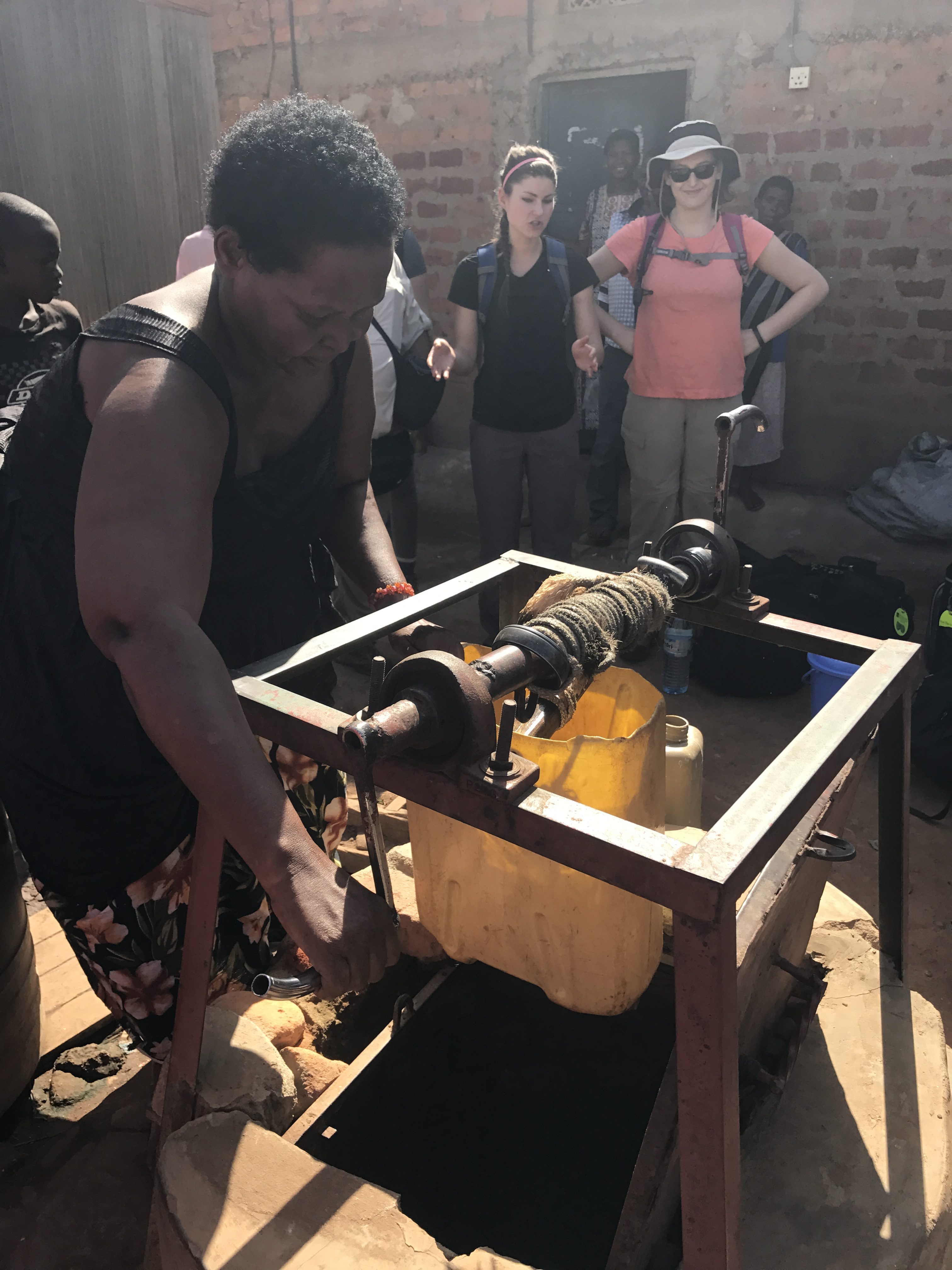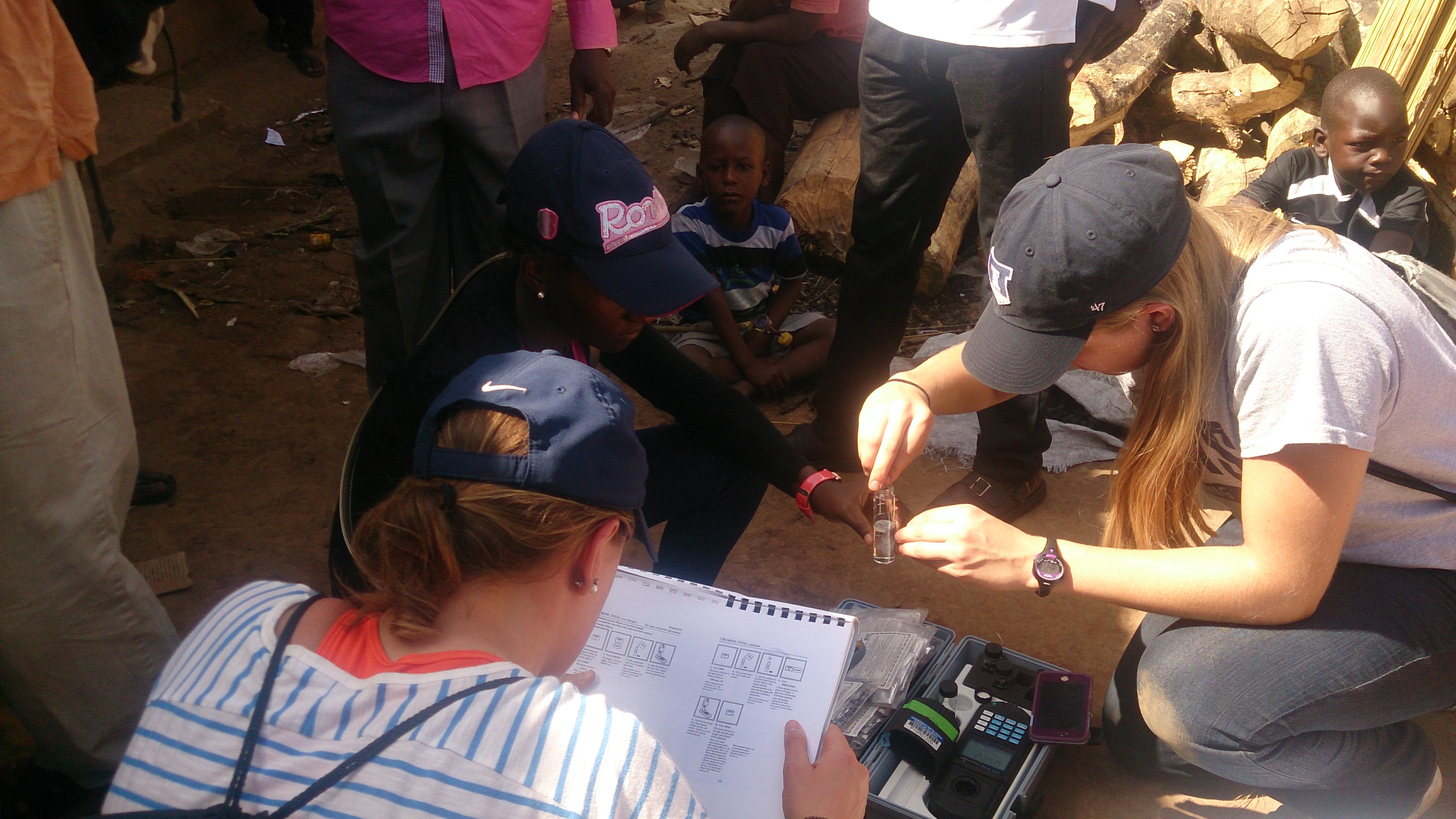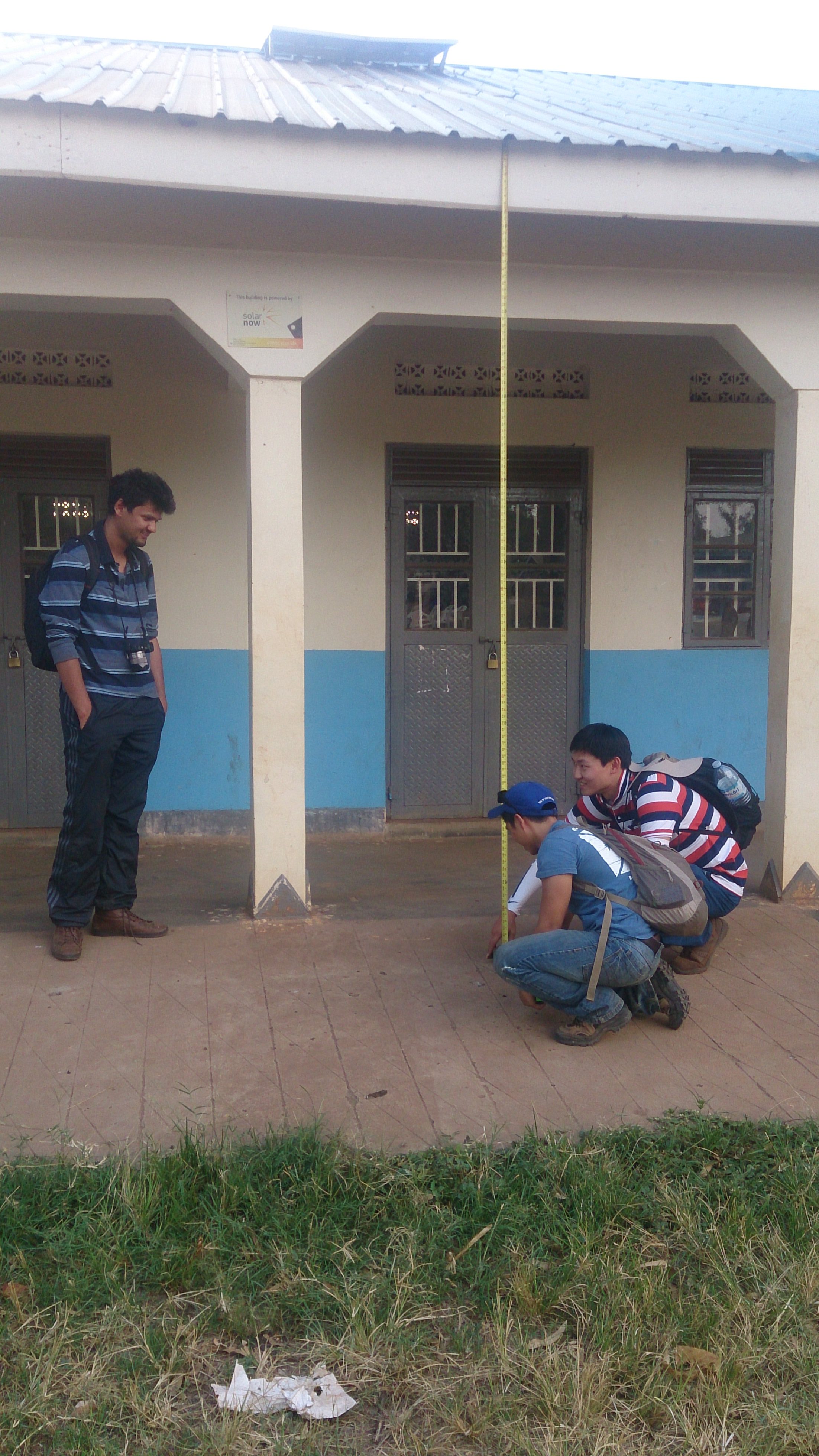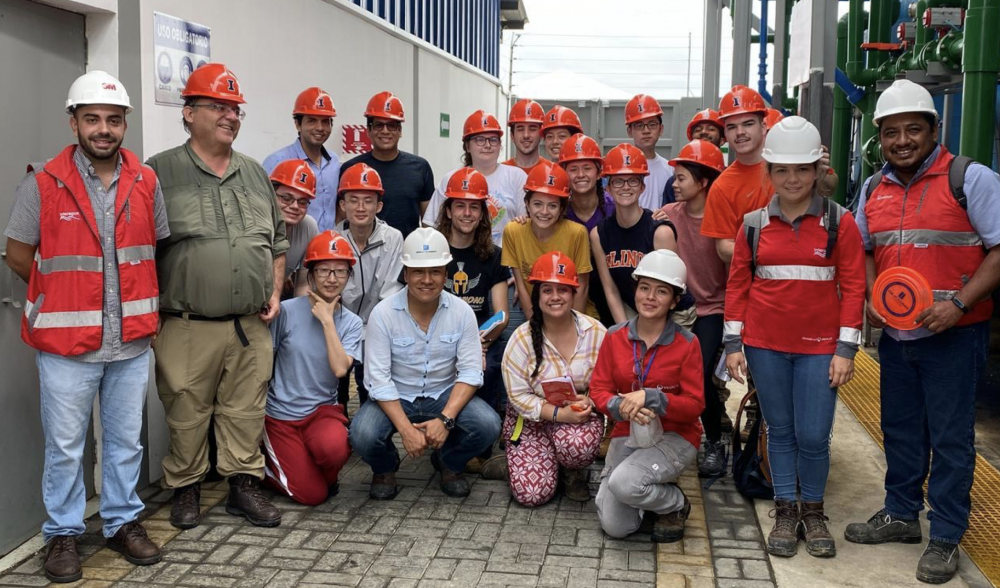February 7th, 2017 by Xiaorui (Sharon) Wu and Anjana Krishnan
Today we finally got the chance to visit the host community and explore their daily life. In the morning, we stopped at a large family with 20 people, including 12 children. The first thing that caught our eyes was a pot set to boil water, which suggested that the family had good drinking practices. The whole family, as well as some residents nearby, drew water from a shallow well built in the center of their yard. This facilitated their life to a large extent: with a nearby well, they did not have to walk long distances to get water from a borehole.

Collecting water from the well
The CEE 449 team members worked as two groups: one of them taking samples from the well while the other interviewed some of the family members and their neighbors. While taking samples, our group observed some latrines just a few steps from the shallow well, causing potential risks to well water due to cross-contamination. Our testing results confirmed the existence of fecal contamination – we found ammonia in the water, with its concentration exceeding the regulation value. Next, we stopped briefly to collect a water sample from an open spring, before arriving at a borehole to collect samples and interview people lining up around it to collect water.

Field water testing
In the afternoon, our team visited a secondary school at the Kiryandongo refugee settlement. There, we had some fun demos about the effectiveness of chlorine in disinfection and the effects of fluoride on teeth. We also collected information about the school’s rainwater harvesting system, their solar lighting backup, and local water sourcing and consumption patterns. We then returned to our hotel for a night of lab work testing the samples for various water quality parameters.

Measuring roof height for solar panel placement
An interesting finding of the day was that that local people generally preferred borehole water to chlorine-treated tap water, due to lower cost and better perceived taste. This encouraged us to brainstorm ways to make our final design more acceptable in terms of social factors such as taste, as well as in terms of water quality.

